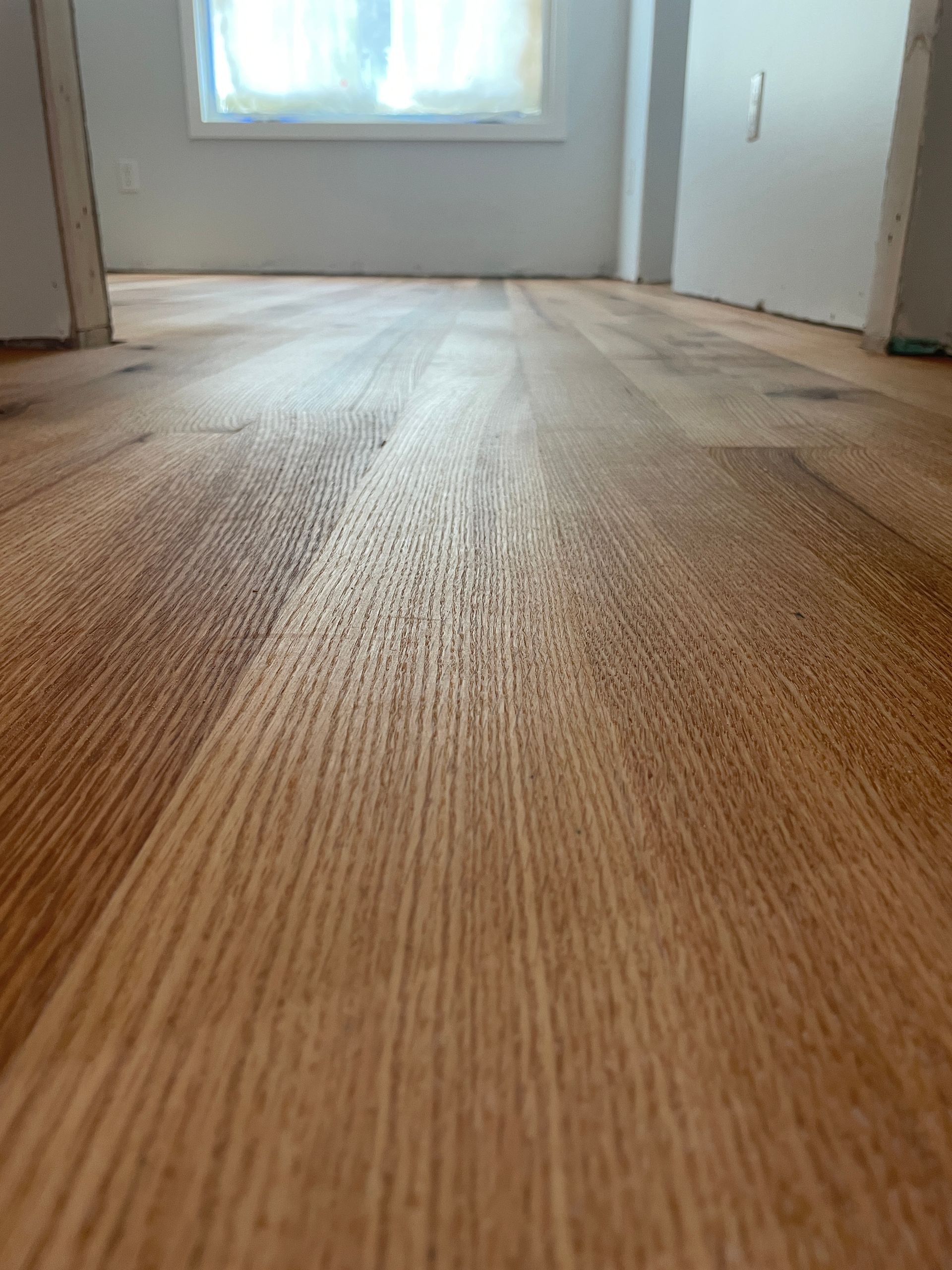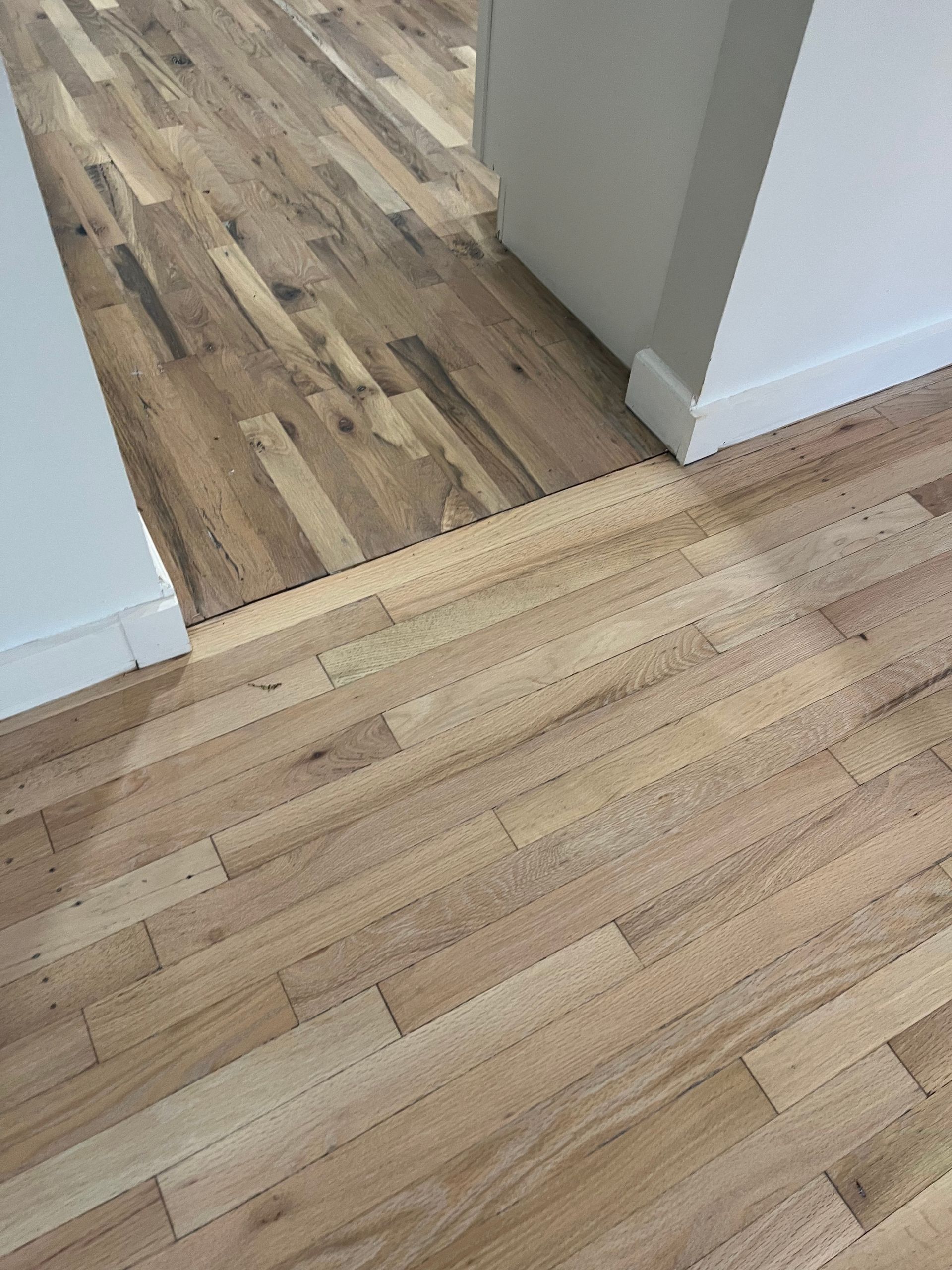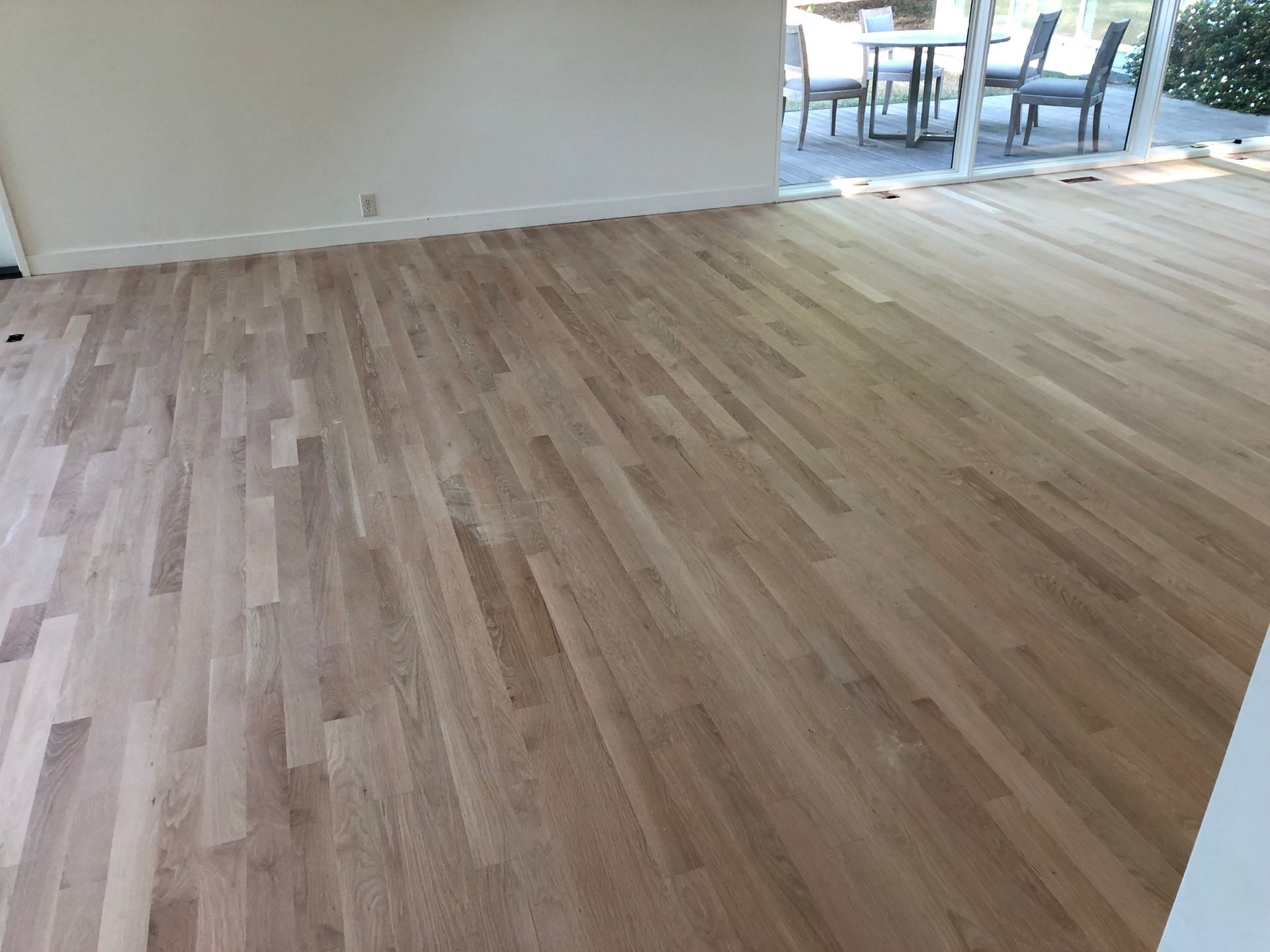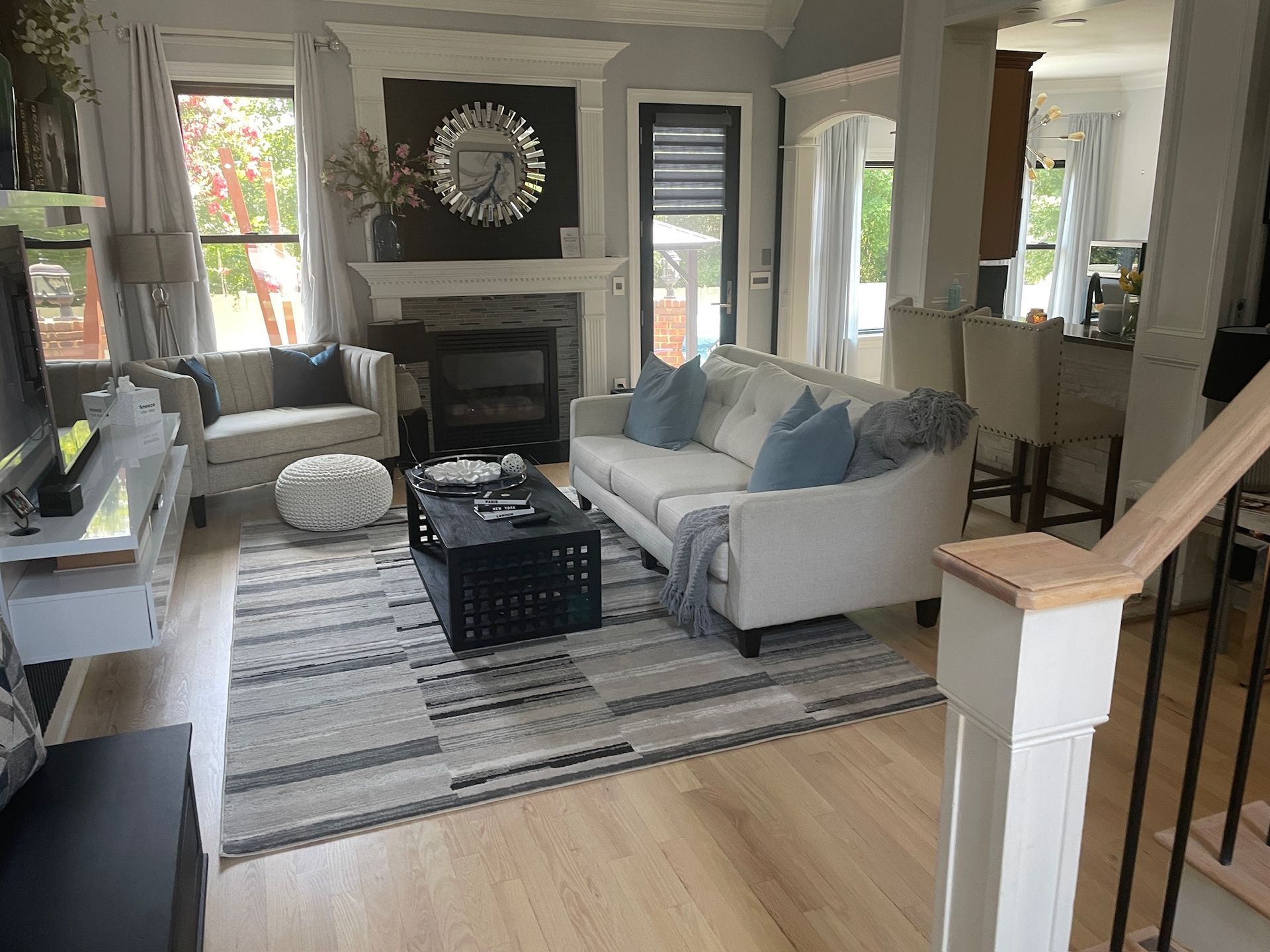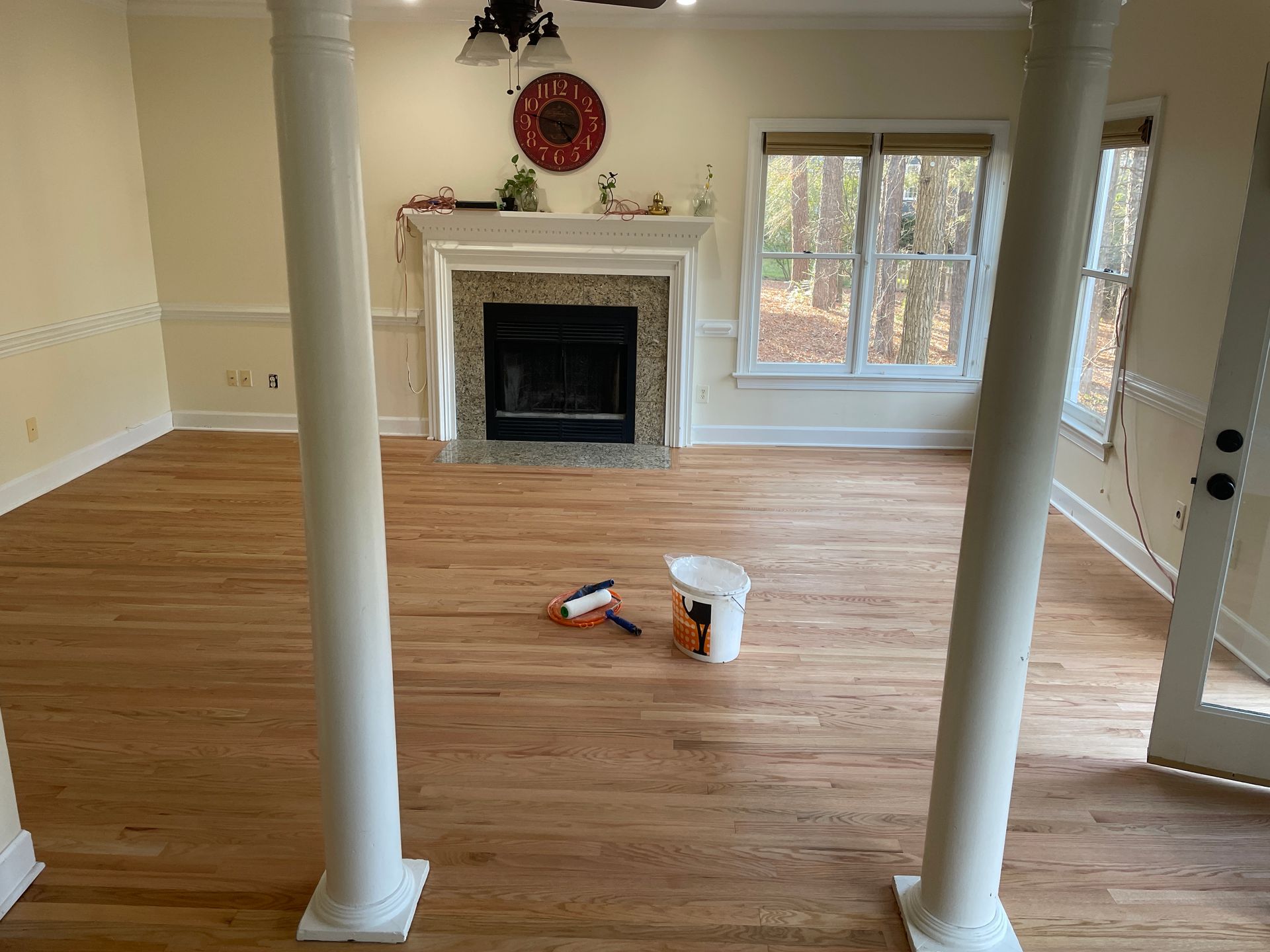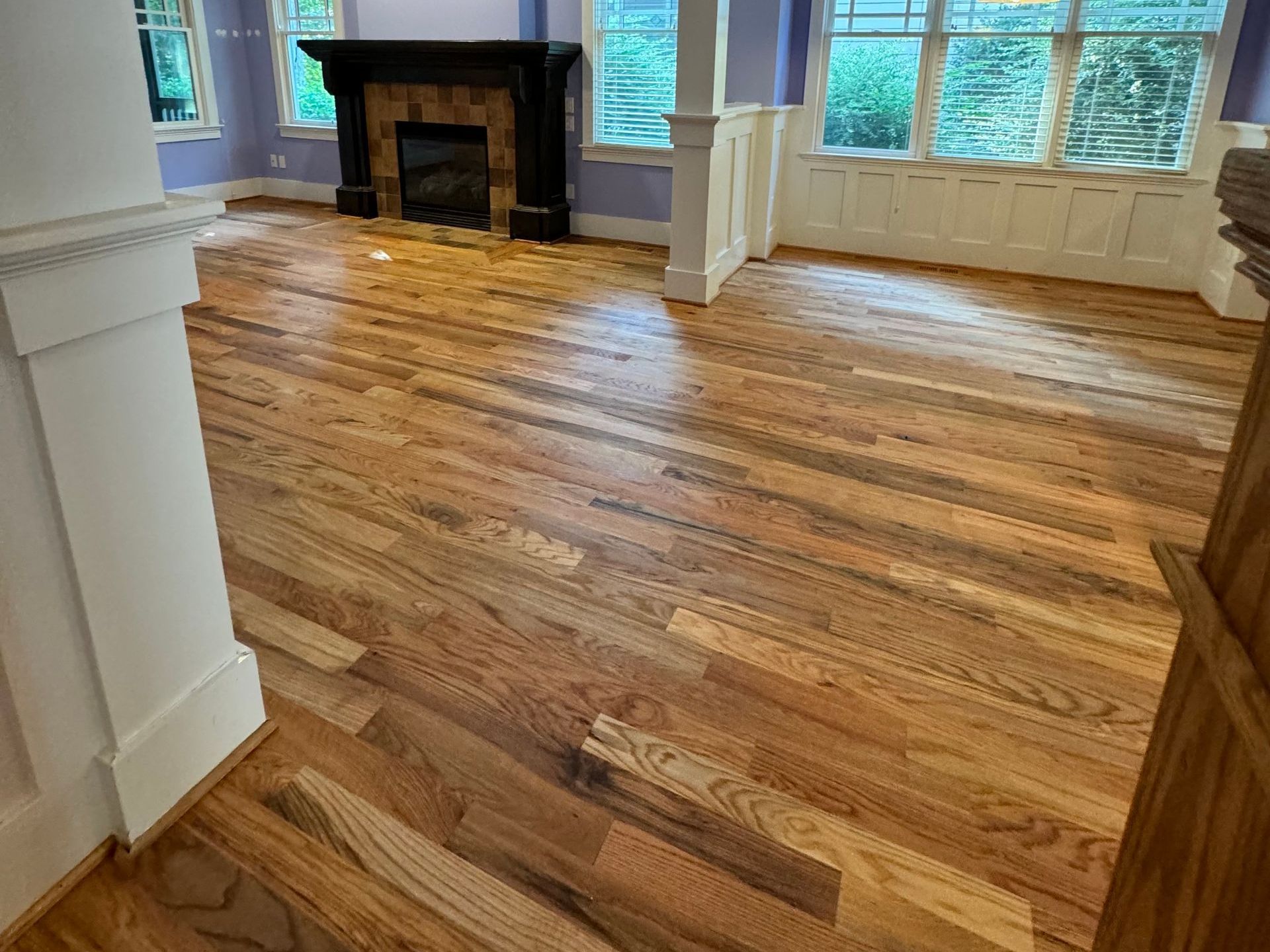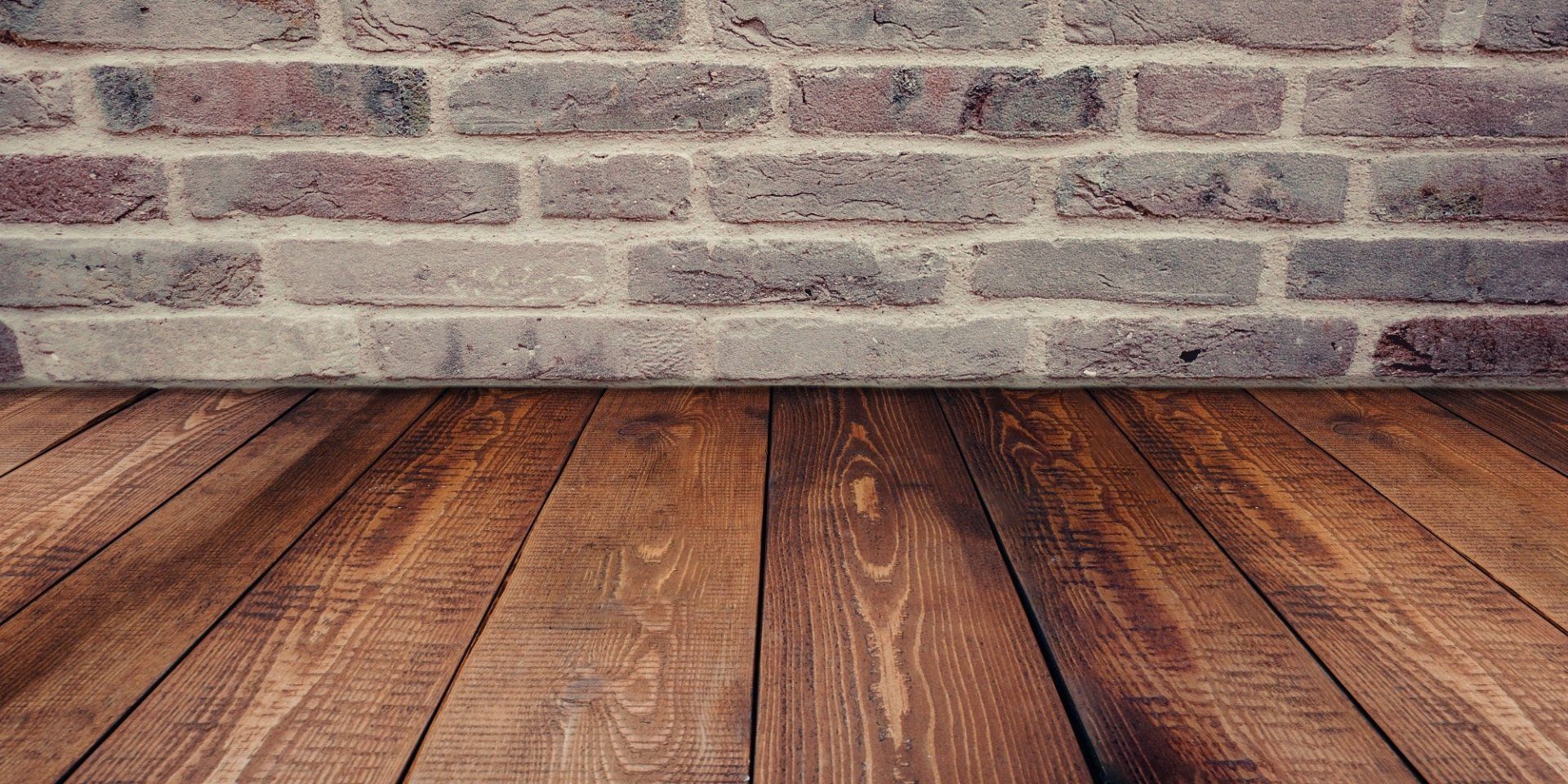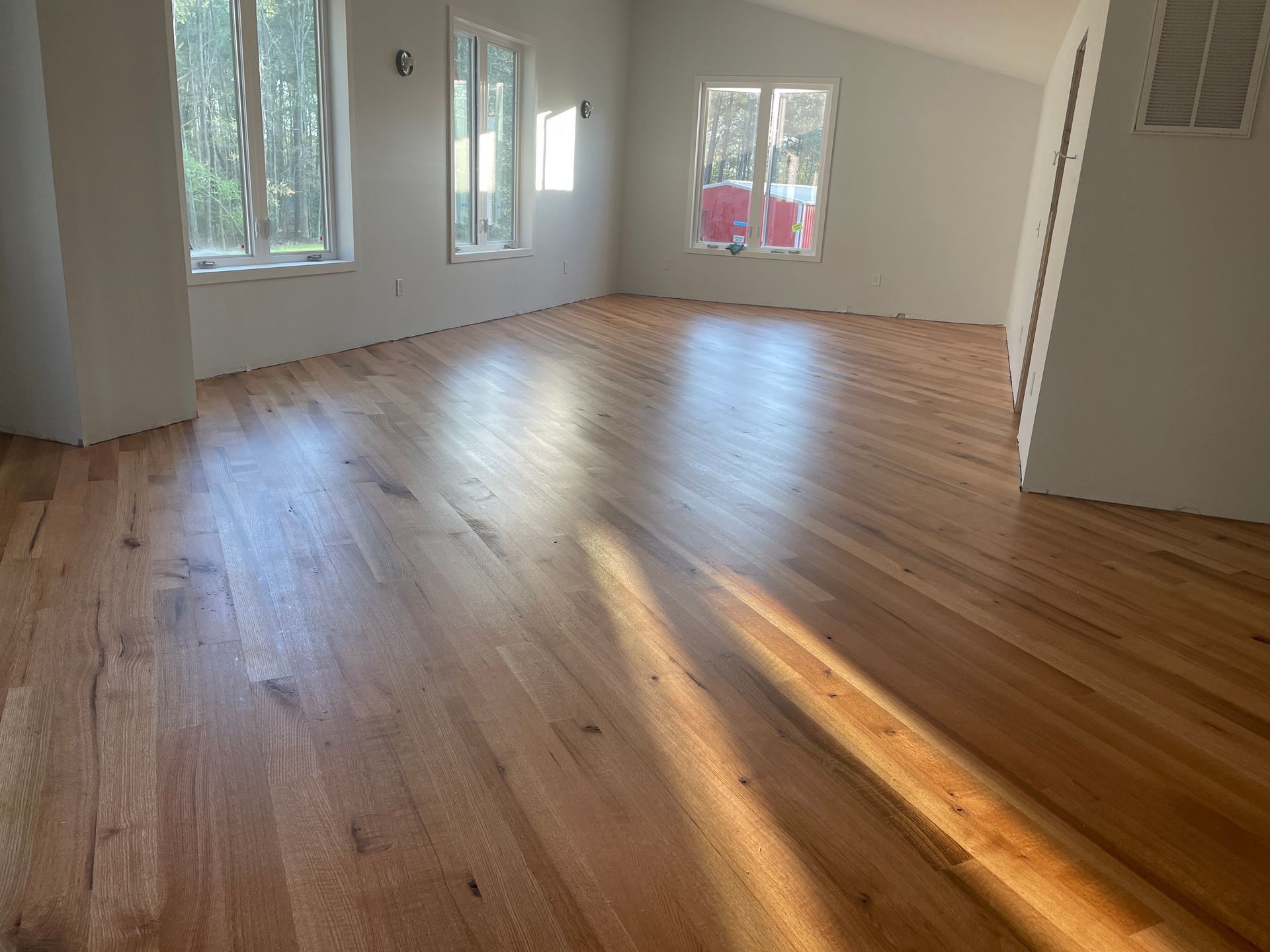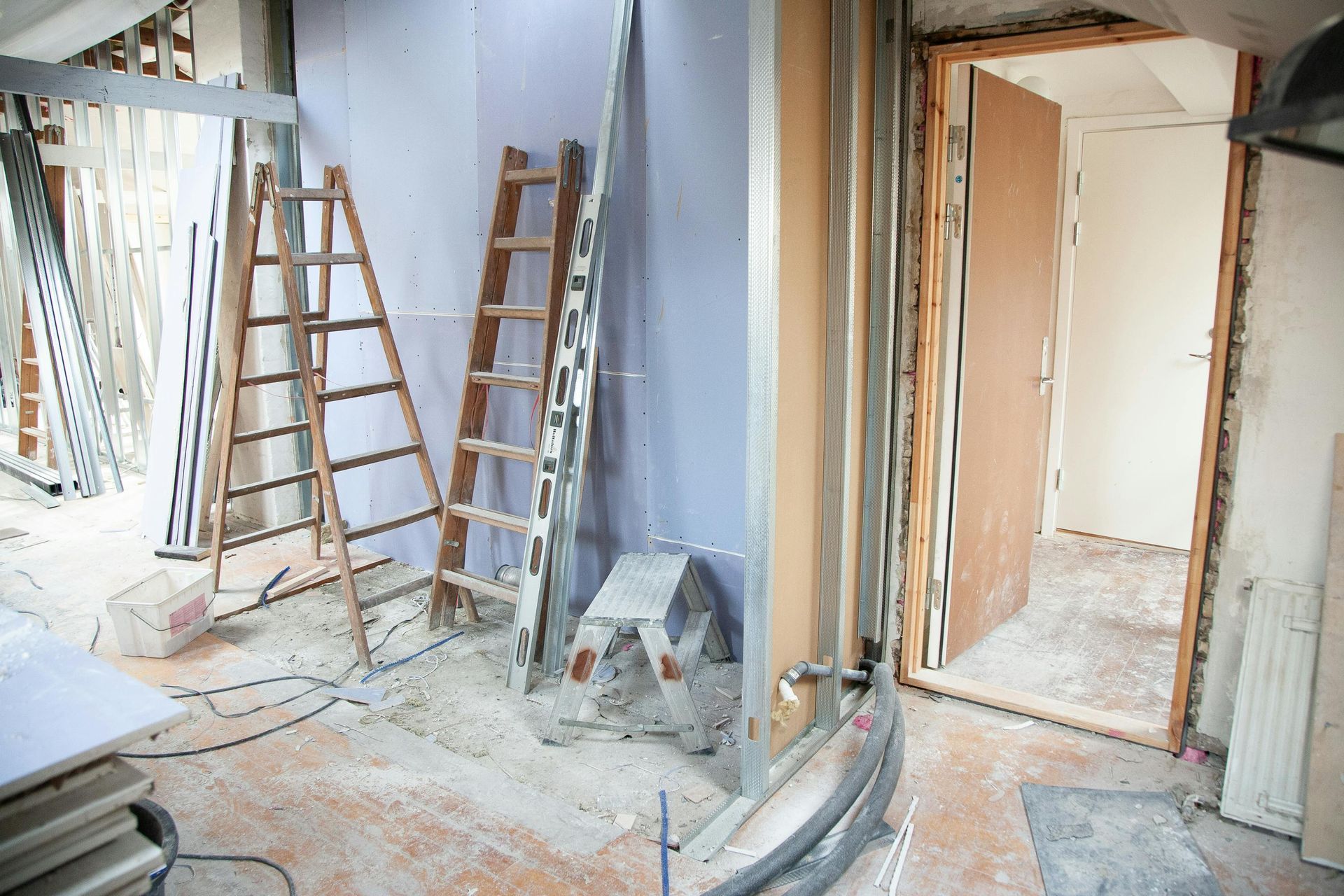Most important thing about sanding floors...
Your floors will look almost as good as new...
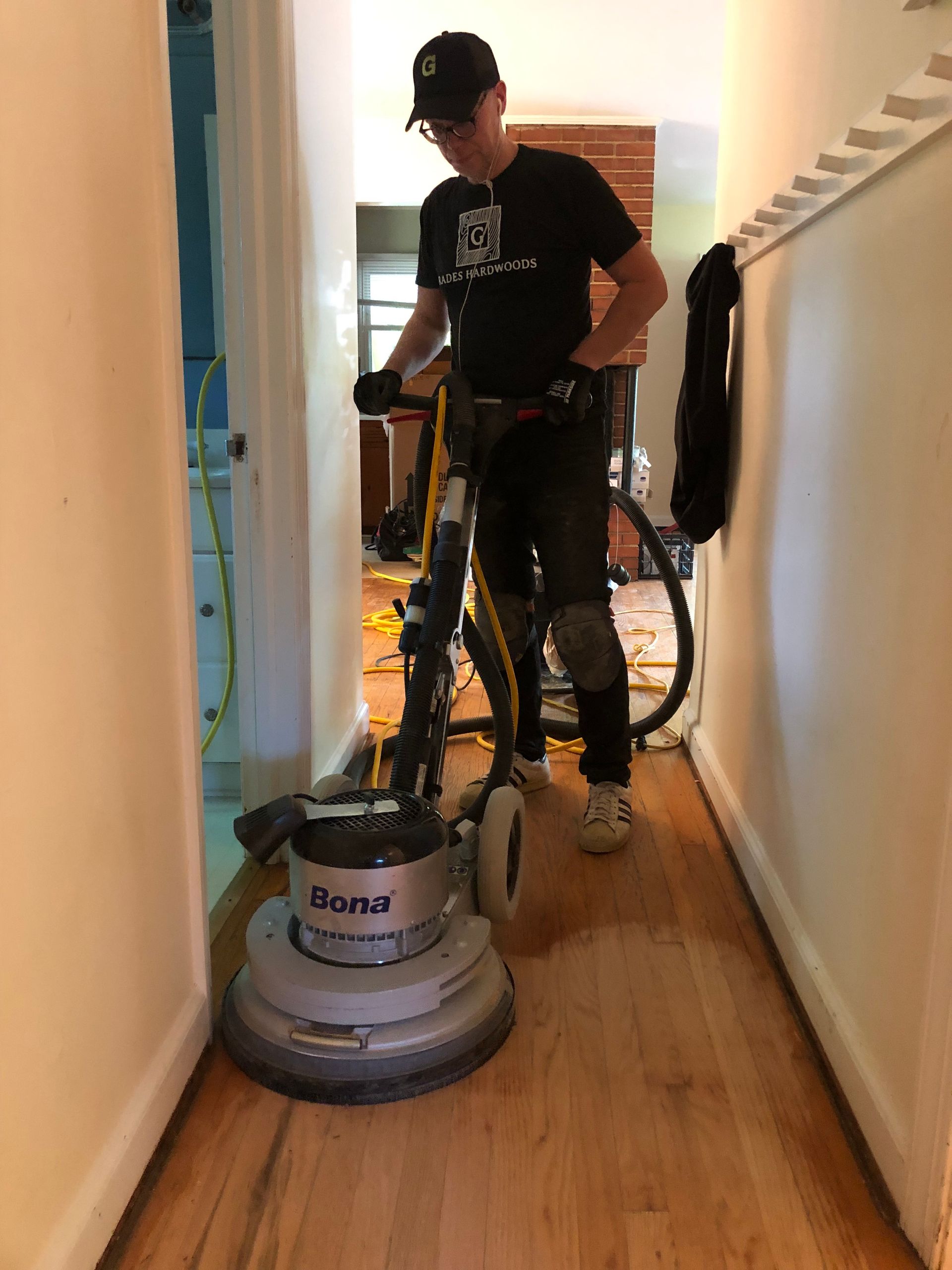
Sanding removes the damaged top layer of wood, revealing a pristine surface that can be stained, sealed, or finished according to personal taste. The result is a floor that looks brand new, giving the entire room a fresh and polished appearance.
Although the finish is gone, scratches remain that must be gradually sanded out. The goal of the initial coarse abrasive is to remove the finish and flatten the wood. But that's not enough. We need to progress through every grit to polish off the scratches left by the previous grit. So the golden rule of sanding is to never skip more than one grit. For example, starting with grit 40, then grit 60 and finally grit 100 is typically a good procedure for most wood floors, however this really depends on the state of the floors and the starting sandpaper grit.
Each sanding removes around 1/32 of an inch of your floor's surface. Most solid hardwood planks are thick enough to be refinished several times. Depending on a floor's thickness and the experience of the flooring professional, a floor can be sanded around 4-6 times in its entire life. Hardwood floors can be refinished every 7-10 years, making the 4-6 refinishes more than enough. After sanding and refinishing, floors will look almost as good as new. If you refinish floors without sanding, you'll have trouble restoring areas where damage has fully penetrated the finish layer and reached the wood.
Sanding is also generally necessary if you want to
change the color of the wood floor. There are many benefits of sanding wood floors, here is a list of the benefits of floor sanding.
- Erases the Signs of Wear and Tear. ...
- Helps to reduce the Pests in Your Home. ...
- Reduces the Possibility of Splinters. ...
- Makes the Floors Easier to Keep Clean. ...
- Increases the Sturdiness of the Floors. ...
- Increases the Value of the Home.
Call us at, 919-336-1562, to discuss your hardwood floors and learn if sanding them is necessary to restore their beauty.

